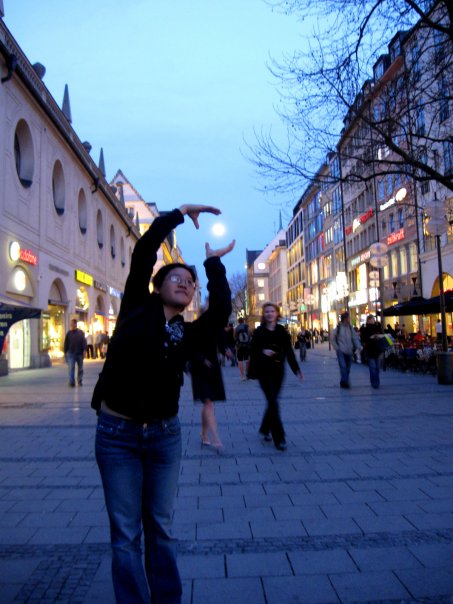Instead of going off for a while to let you take time for a look at the menu, the server stands there from the moment you're seated and takes your order as you're looking at the menu. And you can ask him about virtually anything. The servers somehow know the menus so well that it often seems like any of them are put on chef duty whenever the restaurant needs it. They're frequently much more honest than servers in America. This is tasty but kind of salty, this takes longer to make, this isn't very popular, we even got one restaurant where they came back after we had ordered and told us to pick a replacement alternate for one of our dishes, because their recent shipment of one vegetable used in the dish had been found to be a little stringier than usual.
There were also men and women in suits and earbuds all over the restaurant. They're put there to ensure faster communication between the outer restaurant and the kitchen, but you'd think the FBI was either watching you eat or failing to subtly infiltrate a suspected criminal location. Right. But it's really not so bad, and the food was very good, of course.
Above: So what are these?
1. the famous Beijing Duck
2. "Bao Zi" (BAW dzeh) - meat pastries that come in different types and sizes, and are eaten everywhere in China. There's no good Chinese who doesn't know what a Bao Zi is. Really well made Bao Zi are known and valued for having a puddle of broth inside, and that's exactly how these were. They were amazing.
3. Spicy fish head (it's cut down the middle and splayed out flat)
Usually at restaurants, you're given a clean plate to start with. All of the dishes are in the middle of the table, and the usual manner of going about the meal is that everyone just digs in, chopsticks and spoons. Maybe that sounds kind of messy if you're not used to it, but what people don't realize sometimes is that chopsticks are very versatile when they're used correctly, and they're nothing less than an extension of the fingers. In China, chopsticks and a spoon are always provided. It is rare to see forks and knives.
At nicer restaurants, your personal plate is usually changed out at least once for a fresh clean one when yours gets dirty or begins to pile up with discards (i.e. bones, shells, etc). Tea is usually poured for you, and you order it by the teapot (or in a few places, the tea is complimentary). Tea is basically served at any meal in a restaurant. You can ask for water in most places, if you really want it, but the truth is that they almost never serve water in restaurants as it's commonly done in the States. From our personal experience, you'll get one of two things if you ask for water:
1) A bottle of water, the kind you can buy in a grocery store
2) A really weird look, followed a few minutes later by a pitcher of water that is obviously unfiltered stuff straight from the faucet, in addition to the fact that it may or may not have ice in it. (Ice is also not served nearly as commonly).
If you'd like something cold besides the tea, it's typical to order a pitcher of fruit juice. Orange juice is common, though it's much sweeter and is not as tangy as it is in the U.S., for whatever reason. While we were there, we also had pear, watermelon, plum, and a several other juices.
Speaking of grocery stores a few lines back...

No comments:
Post a Comment